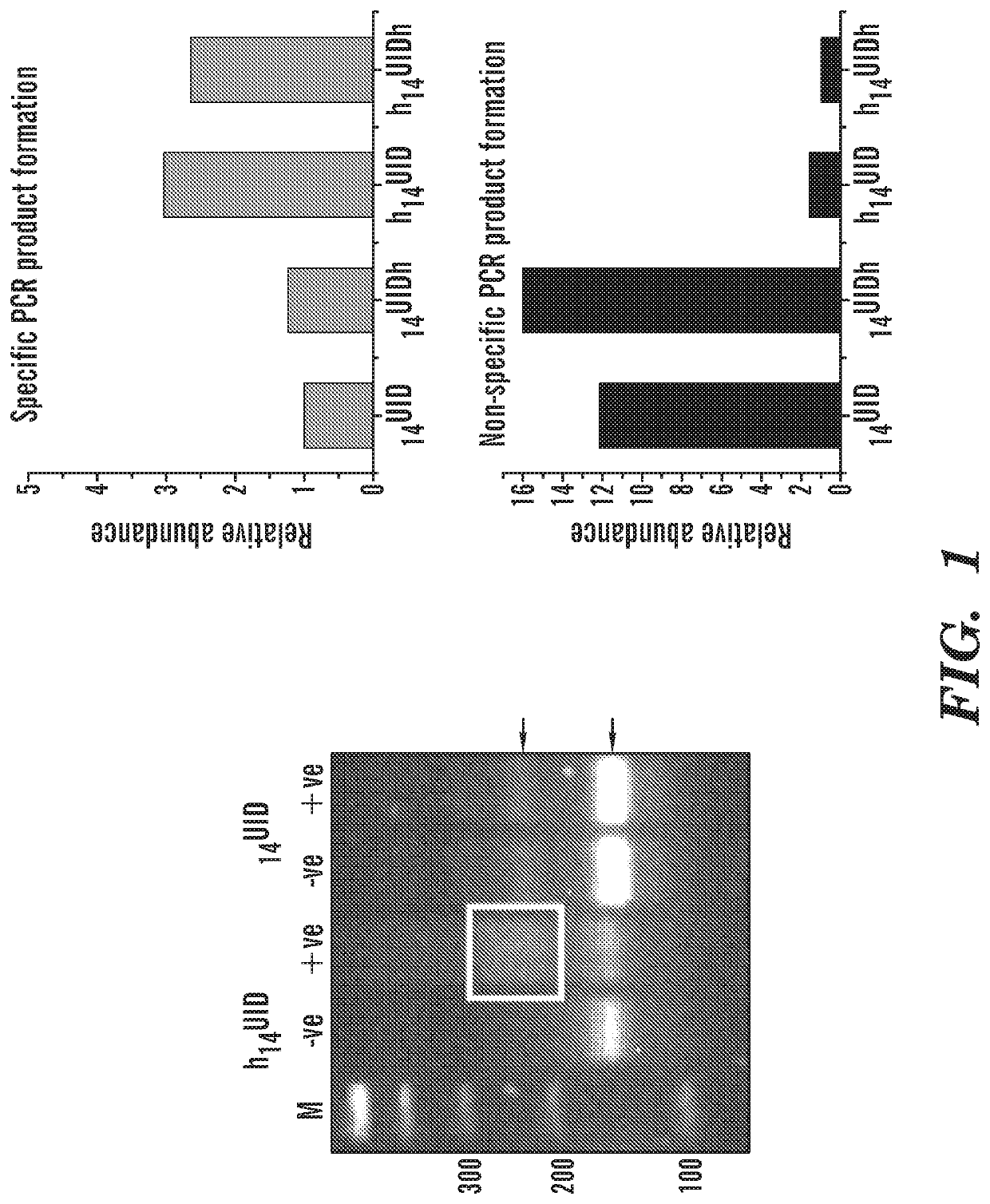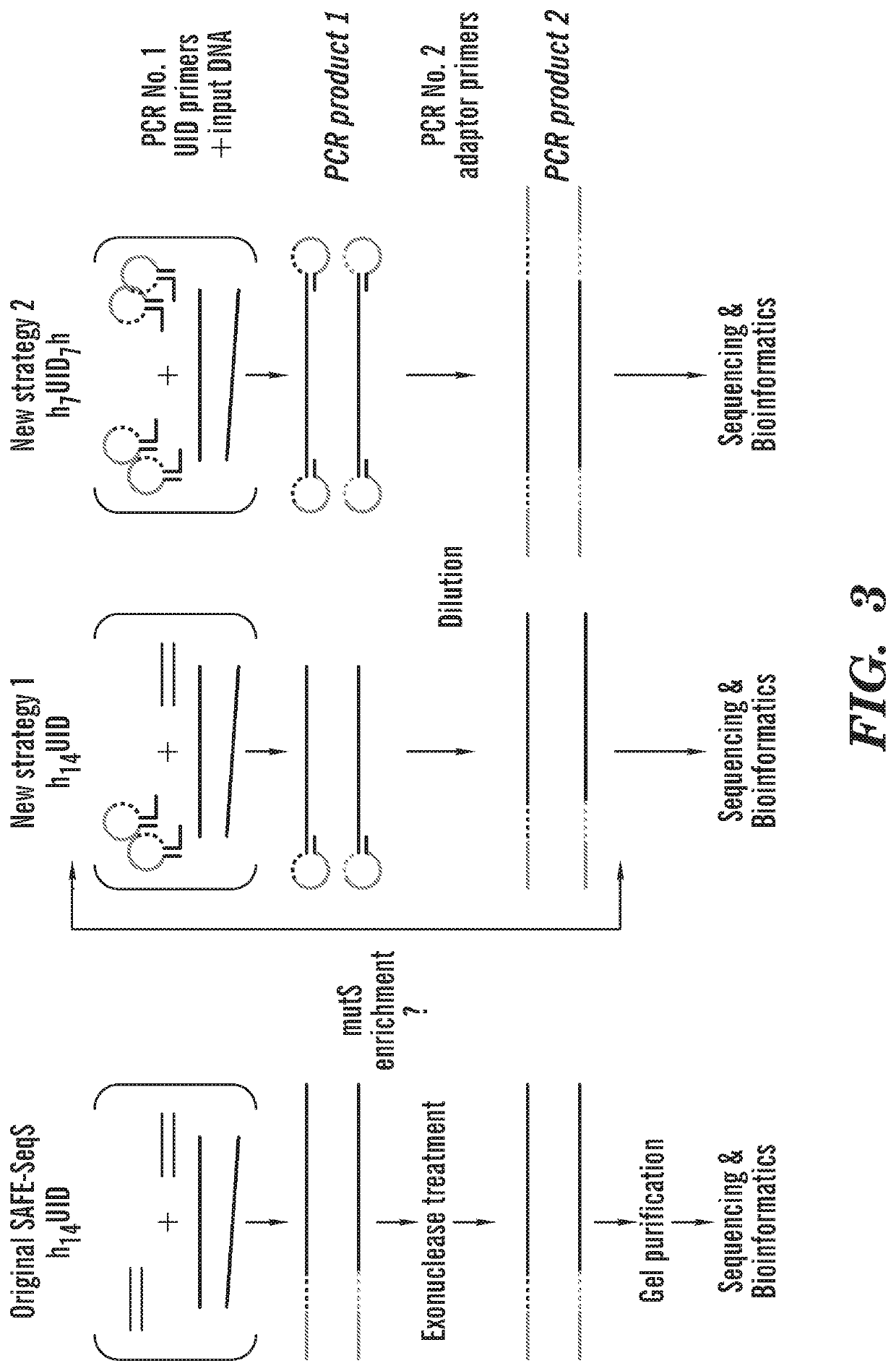Protection of barcodes during DNA amplification using molecular hairpins
a technology of dna amplification and barcodes, applied in the field of barcode protection during dna amplification, can solve the problems of large amounts of relatively good quality dna, difficult reliable detection of mutant fractions below 1-2%, and limited mutation detection levels, and achieve the effect of reducing non-specific pcr priming
- Summary
- Abstract
- Description
- Claims
- Application Information
AI Technical Summary
Benefits of technology
Problems solved by technology
Method used
Image
Examples
example 1
[0200]Even with next-generation sequencing, detection of very rare mutations in clinical samples is challenging due to background noise from sequencing errors. Approaches to overcome sequencing errors have been described but still have significant limitations. The methods described herein provide new approaches that facilitate detection of very rare mutations in clinical samples when used in combination with next-generation sequencing.
[0201]Next-generation sequencing (NGS) is now widely used in cancer research and is also an important clinical tool. Using targeted libraries, NGS can interrogate specific genome regions at extremely high depth and therefore identify rare mutations even in relatively heterogeneous clinical samples, such as cytology samples or bodily fluids. However, mutant detection levels are still limited by the error rate inherent in current NGS protocols, such that reliable detection of mutant fractions below 1-2% remains challenging. While this is adequate for man...
example 2
[0238]Detection of cell-free DNA in liquid biopsies offers great potential for use in non-invasive prenatal testing and as a biomarker in patients with cancer. Fetal and tumor DNA fractions however can be extremely low in these samples and ultra-sensitive methods are required for their detection. As described herein, we report an extremely simple and fast method for introduction of barcodes into DNA libraries made from as little as 5 ng of DNA. Barcoded adapter primers are designed with an oligonucleotide hairpin structure to protect the molecular barcodes during the first rounds of PCR and prevent them from participating in mispriming events. This approach enables high-level multiplexing and next-generation sequencing library construction with flexible library content. Utilizing the barcodes to generate consensus reads for each original DNA molecule greatly reduces background sequencing noise and allows detection of variant alleles at or below 0.1% frequency in biologically challen...
PUM
| Property | Measurement | Unit |
|---|---|---|
| temperature | aaaaa | aaaaa |
| temperature | aaaaa | aaaaa |
| temperatures | aaaaa | aaaaa |
Abstract
Description
Claims
Application Information
 Login to View More
Login to View More - R&D
- Intellectual Property
- Life Sciences
- Materials
- Tech Scout
- Unparalleled Data Quality
- Higher Quality Content
- 60% Fewer Hallucinations
Browse by: Latest US Patents, China's latest patents, Technical Efficacy Thesaurus, Application Domain, Technology Topic, Popular Technical Reports.
© 2025 PatSnap. All rights reserved.Legal|Privacy policy|Modern Slavery Act Transparency Statement|Sitemap|About US| Contact US: help@patsnap.com



